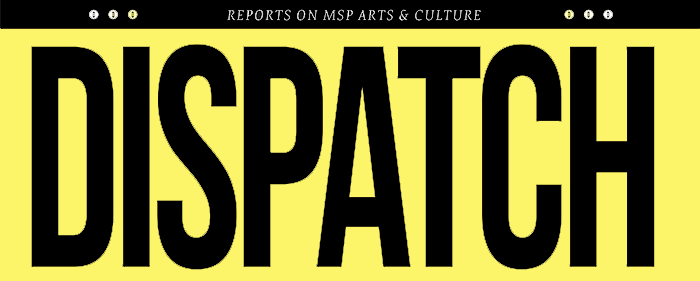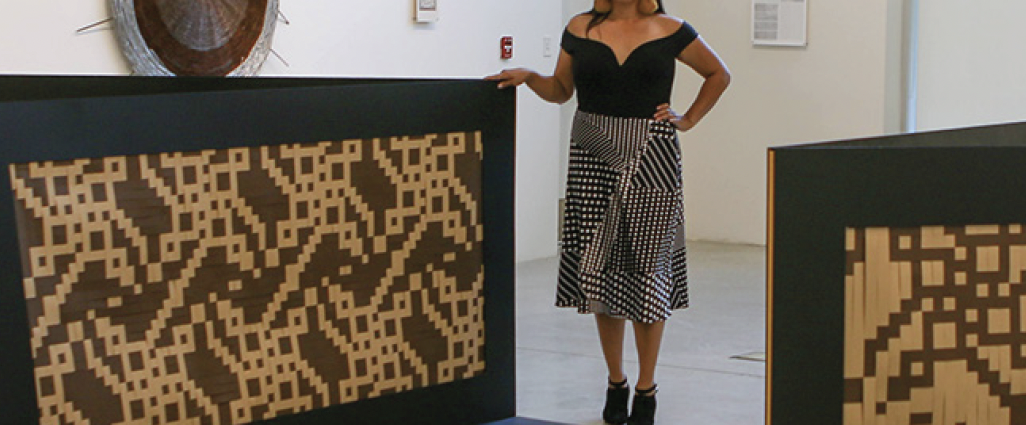Artistic alchemy spins silence and sorrow into strength.
WORDS BY CHLOE GALLAGHER
• • •
Two Minneapolis exhibitions debuting this month are examining hard truths through mediums whose perceived delicacy bely a profound narrative power. In Paper is People: Decolonizing Global Paper Cultures, the Minnesota Center for Book Arts asks viewers to challenge their idea of what paper is, what it can be, and who arbitrates its margins. At Foci, Carla Christenson uses the mutable, unpredictable nature of glass to explore pain and the stories it writes on the body in her solo show At the Seams, In the Flesh.
A common understanding of paper is a thin sheet of fiber used to convey written information, but this idea is firmly rooted in European techniques and applications that have been used to uphold hegemonic power. This limited definition of paper has been wielded effectively as a tool to dismantle resistance to colonialism, aid in the erasure of non-European cultural production, and commit linguistic genocide. Many of the works in the exhibit are not immediately recognizable as paper, a fact that underscores the central query of the show: What are the assumptions we carry about paper and how did they come to be?
Chenta Laury and Page Chang work with kapa, a traditional Hawaiian substrate made from mulberry bark. Julio Laja Chichicaxtle’s intricate woven works are made with amate, a Mexican bark paper made in the Otomi tradition. These pieces are deceptively simple, letting the medium be the message, telling stories of resistance and resilience without printing a word. Other pieces are more overtly didactic, though no less powerful. Indigenous artist Skye Tafoya presents a basket-weaving made from paper in two distinct sizes, the larger version made to represent the relative importance of the tradition in her ancestral cultures. Kelly Church introduces us to the Anishanaabe tradition of birch biting, folded pieces of birch bark with intricate designs incised by teeth marks. And Alisa Banks engages the African American tradition of quilt making, a storytelling substrate used by enslaved peoples when denied access to literacy and tools for recording history.
Programming held throughout the run of the exhibition will include four workshops led by visiting artists, giving the public the opportunity to try their hands at Ink-Making from ecology, or learn Indo-Islamic, Vietnamese, or Sustainable papermaking. After leaving its impression on Minneapolis, the show will travel to the San Francisco Center for the Book in October.
Into Focus
On view now through June 18, Carla Christenson’s solo show at Foci is small, but packs a wallop. Examining the complex dynamics of the human body’s relationship to pain and our cultural expectations around its expression, Christenson’s mixed media objects are made of glass, epoxy resin, and medical implements. The work was made during and after her Fall 2022 Foci Local Emerging Artist residency. “It is through glass and mixed materials that I am working to define what pain is to me and to better understand that to live is to occasionally break,” she writes in her artist statement.
Glass is an interesting medium for art creation. It is both resilient and fragile, like the human body. While glass may be brittle in its final form it goes through several permutations on the road to becoming, from a hot and viscous liquid to a putty-like mass, at once pliable and extremely dangerous. It is a very physical medium, the contained simplicity of a final product often veiling the high degree of sweat equity involved. For Christenson pain is implicit in the process of making.
Christenson got her BFA from UW-Madison, where the American studio glass movement got its academic start in the late 1950s under the tutelage of Harvey Littleton. For decades there were very few women making glass art, and those that did were rarely taken seriously by their male peers. Trailblazers such as Audrey Handler and Edris Eckhardt persevered through the haze of machismo that characterized the movement’s initial decades, but women working in glass still contend with lazy assumptions about the femme body’s ability to stand the heat.
Christenson’s influences are diverse, ranging from contemporary glass artists Jes Fan and Doreen Garner to horror films and Clive Barker’s Cenobites, pain-hungry doyens of the Hellraiser franchise. Her amorphous, fleshy objects may be stuck through with pins and meathooks, at times spilling puddles of resinous gore, but they still manage to project a sense of serene stoicism.
Earnest without being overly self-serious, it is in the details where the work really shines. Just when you think you’ve hardened yourself to a pretty piece of flesh, a new angle reveals new textures lurking under the velvety surface, like dark marbling of organ meat. There is something placid, even reverent in the work, an acceptance of pain as inevitable and universal.
WHEN YOU GO
Paper is People on view April 13-August 12
Public reception June 22 from 7-9 PM
Minnesota Center for Book Arts, 1011 S Washington Ave #100, Mpls.mnbookarts.org
At the Seams, In the Flesh on view through June 18.
An artist reception and talk May 19
5-8 PM.
Foci Minnesota Center for Glass Arts
2213 Snelling Ave, Mpls.
mnglassart.org

